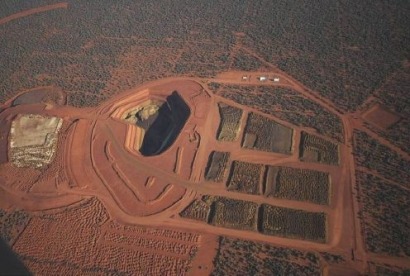
The Institute for Energy and Transport of the Joint Research Centre (JRC) of the European Commission conducted its study to assess whether there could be any potential bottlenecks to the deployment of low-carbon energy technologies in the EU due to the shortage of certain metals.
The study, "Report on Critical Metals in Strategic Energy Technologies," examined the use of metals in the six low-carbon energy technologies in the EU’s strategic energy technology plan: nuclear, solar, wind, bio-energy, carbon capture and storage, and the electricity grid.
"The share of the neodymium and dysprosium that will be used by the European wind power sector in the 2020-2030 timeframe would remain 1 percent of world supply were realistic supply assumptions used", said Justin Wilkes, EWEA Policy Director today in Brussels.
According to the EWEA, the report “correctly identifies the increasing use of permanent magnet generators in wind turbines. The main materials used in these magnets are rare earth oxides, mainly neodymium and dysprosium.”
The report states that in 2020 the European wind industry will use between 326 and 635 tonnes of neodymium, equivalent to between 1.8 percent and 3.5 percent of world's 2010 supply, and in 2030 will use between 192 and 730 tonnes, which is between 1.1 percent and 4.0 percent of world's 2010 supply.
As for the use of dysprosium, the report said that the European wind industry will use 22 and 44 tonnes, equivalent to between 1.9 percent and 3.6 percent of world's 2010 supply, and in 2030 will use between 13 and 50 tonnes, which is between 1.1 percent and 4.2 percent of world's 2010 supply.
“The major shortcoming of the report is the assumption that supply of the rare metals will not increase beyond 2010 levels, despite future supply scenarios being publicly available,” the EWEA said.
The association’s research shows the European wind industry would use 0.81 percent of world supply of neodymium in 2020, 0.95 percent of world supply of dysprosium in 2020, and 0.35 percent of world supply of neodymium in 2030 and 0.41 percent of world supply of dysprosium in 2030.
The JRC conducted a study in cooperation with Oakdene Hollins (UK) and The Hague Centre for Strategic Studies (NL).
By analysing the average annual demand for metals up to 2020 and 2030 and comparing to the respective global production volume in 2010, 14 metals were identified that will require 1% or more (and in some cases, much more) of current world supply per annum.
These 14 metals, in order of decreasing demand, are tellurium, indium, tin, hafnium, silver, dysprosium, gallium, neodymium, cadmium, nickel, molybdenum, vanadium, niobium and selenium.
The 14 metals were then scrutinised in more detail in terms of their risks of meeting the anticipated demand by analysing the likelihood of rapid growth in future global demand, the limitations to expanding supply in the short to medium term, and the concentration of supply and political risks associated with key suppliers.
In particular, the former three are especially applicable to photovoltaics, where, if there is, as projected, a greater shift towards CdTe and CIGS thin film technologies, then this could considerably increase the annual demand-to-supply for tellurium (up to 48 percent), indium (up to 32 percent) and gallium (around 8 percent).
Furthermore, the latter two metals, neodymium and dysprosium (both rare earth metals), are applicable to wind energy and the projected shift away from electromagnetic systems towards permanent magnetic-based direct drive systems would be to increase their demand to around 4 percent of current world supply.
The report also explored potential mitigation strategies, ranging from increasing European primary production and by-product separation, encouraging re-use, recycling and waste reduction, and examining their substitution potential.
For additional information:

